Top 10 Most Beautiful Castles In The World You Must Visit
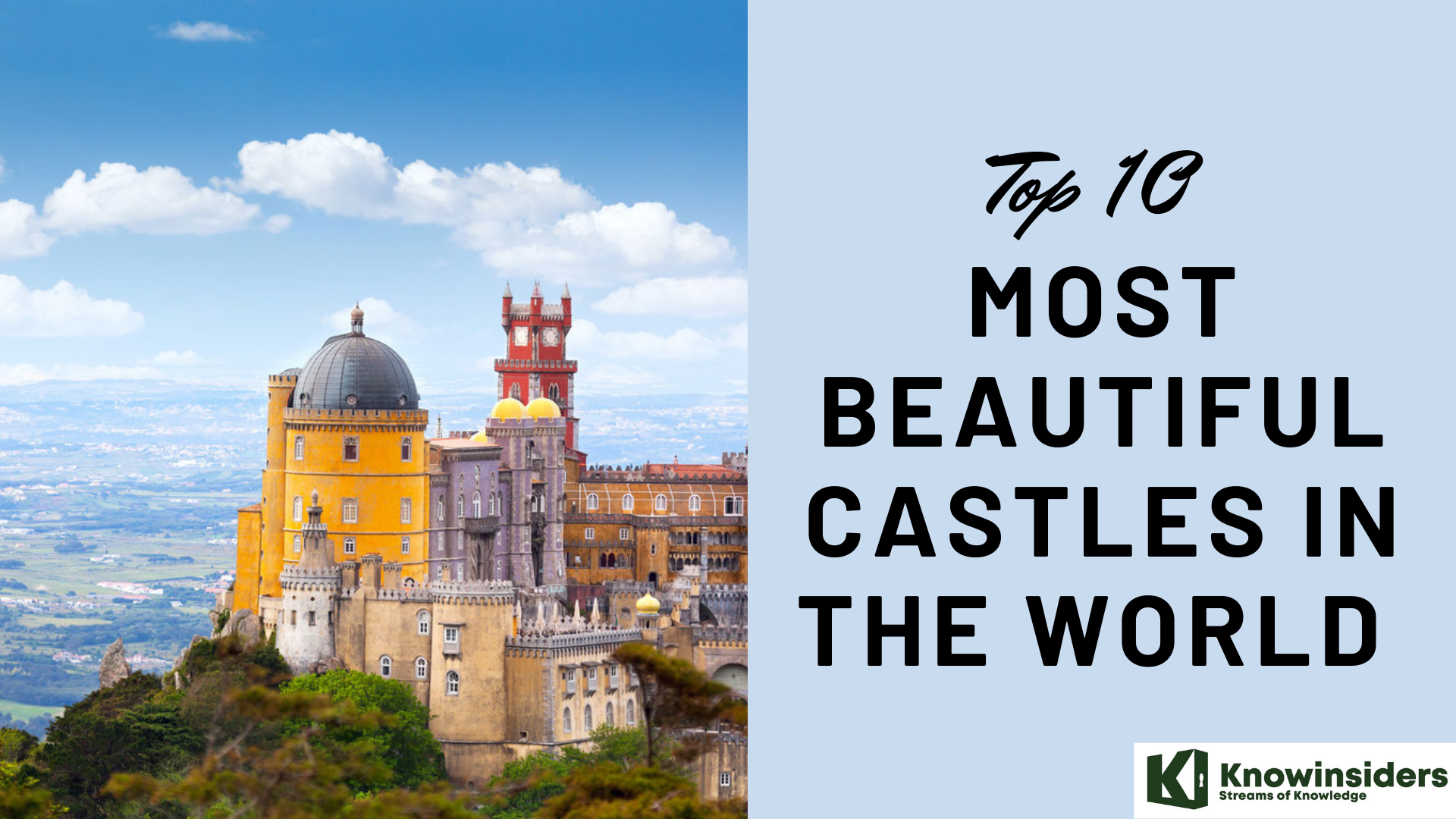 |
| Top 10 most beautiful castles in the world. Image: KnowInsiders.com |
| Table of Contents |
It's like diving into our history when you visit these castles. Learn about the history of European territories, of wars, of nations and regions, of kings, of alliances and vendettas, and of the families who have made and broken Europe. Explore Europe's most exquisite castles.
Why do travelers find castles to be so enticing? In addition to bringing us one step closer to realizing our dreams of living out fairytales, the incredible buildings display some of the most breathtaking landscapes, architecture, and perhaps even a ghost or two. Europe is probably the best place on earth to find breathtaking castles; it seems like you can't go to a city or go on a road trip there without coming across a royal residence of some kind.
What are the top 10 most beautiful castles in the world?
10. Eilean Donan Castle
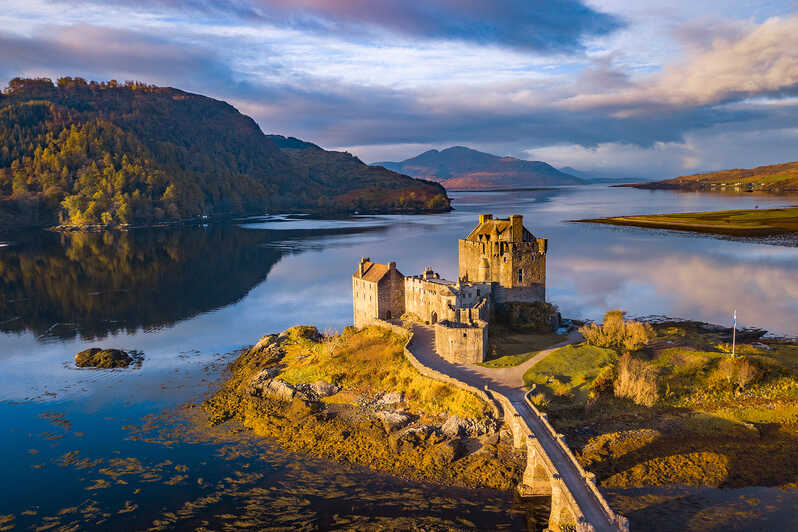 |
| Photo: GetYourGuide |
Probably the most recognizable castle in Scotland, Eilean Donan Castle can be found on more shortbread tins and calendars than any other. It is unquestionably a symbol of Scotland and among the most visited sites in the Highlands. It is simple to see why so many people return year after year to its sturdy doors once you lay eyes on it. Situated on a small island with a commanding view of the Isle of Skye, Eilean Donan's setting is truly breathtaking. It is situated at the meeting point of three large sea lochs and is encircled by the majestic splendor of Kintail's forested mountains.
Visitors enter the spacious parking lot and proceed to the bright, contemporary visitor center, which is home to the gift shop, restaurant, and ticket office. The Conchra Charitable Trust, whose main goal is to preserve the structure and its artifacts for the country and future generations, was founded in the 1980s by the MacRae family, the castle's owners. The trust oversees the entire operation.
9. Culzean Castle
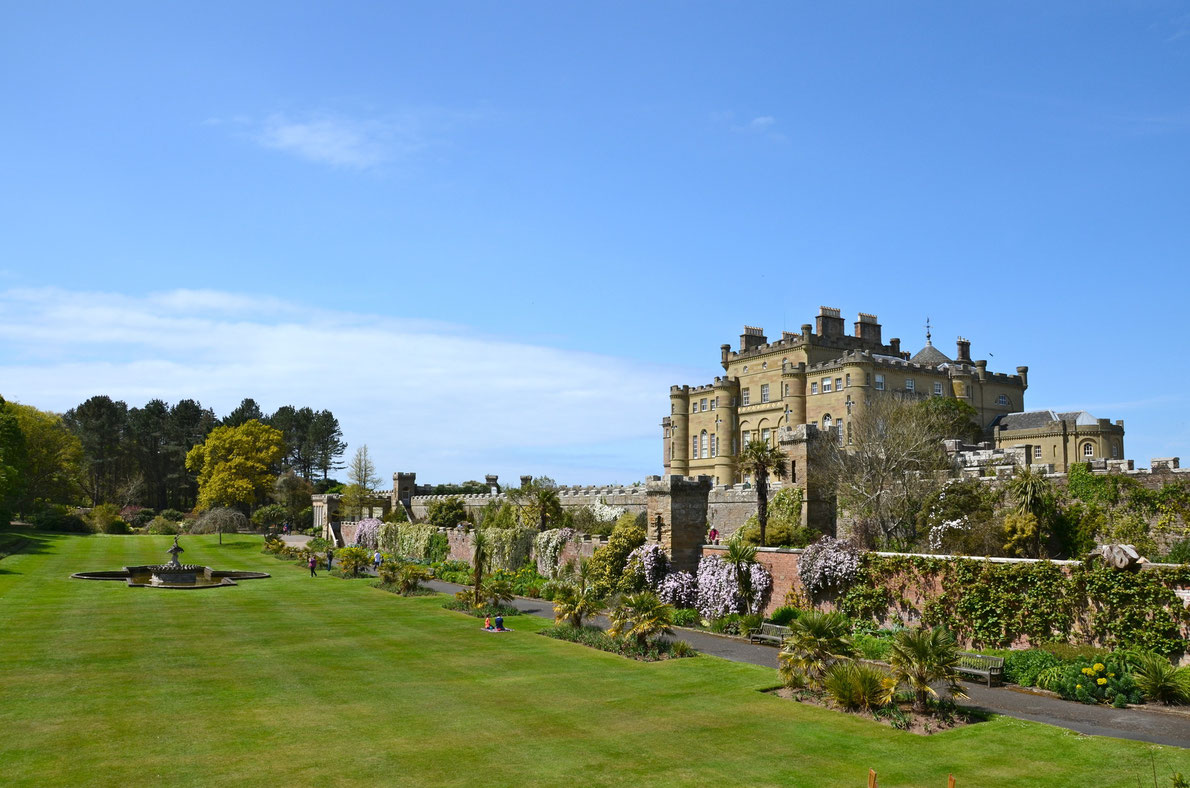 |
| Photo: Europeanbestdestinations |
The park is shaped around miles of sandy coastline dotted with caves, and finished off with a Swan Pond, an ice house, flamboyant formal gardens, and fruit-filled glasshouses. It was once the playground of David Kennedy, 10th Earl of Cassillis, a man eager to impress with his wealth and status.
Situated atop the Ayrshire cliffs is the castle itself. Robert Adam created the design in the late 1700s, and it is stacked to the gables with artifacts that narrate the lives of those who called it home. Discover the castle's greatest attributes with a guided tour, which will cover Adam's architectural marvel, the oval staircase, and the exquisite furniture and painting collection.
President Eisenhower and Culzean are also close because of the apartment on the top floor, which was given to him as a lifetime gift for his service in the Second World War. You can now check into the magnificent Eisenhower Apartment as a paying visitor.
Whether you love to stroll, appreciate beautiful gardens, are interested in architecture, or just want to spend some time learning about the past, Culzean Castle is the ideal destination for a day trip. Younger guests can let loose in the recently constructed Adventure Cove and Wild Woodland play areas.
Enjoy soup, sandwiches, and a delectable piece of cake in the Fo'c'sle castle tea room. You can also enjoy afternoon tea while admiring the breathtaking views of the Firth of Clyde.
8. Castello di Miramare, Italy
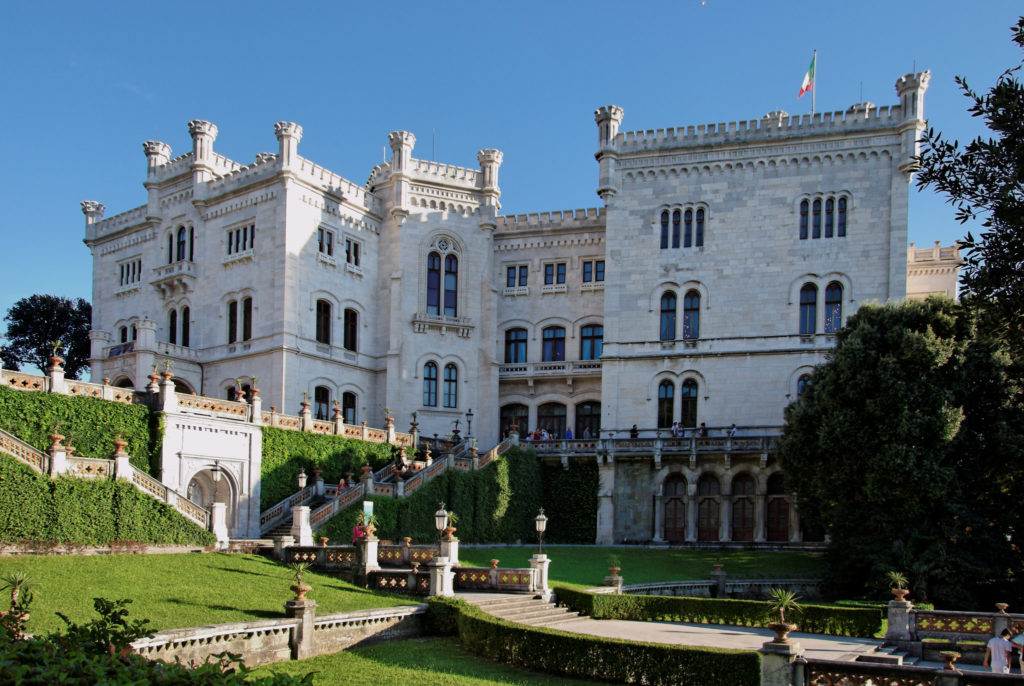 |
| Photo: The Travel Hacking Life |
The imposing white castle, which is the cherished residence of Archduke Ferdinand Maximilian of Habsburg, the brother of Emperor Franz Joseph, is encircled by an expansive park featuring uncommon and exotic tree species that the Archduke personally gathered during his global scientific explorations on board the frigate Novara. The park has a view of the ocean.
The castle was constructed for Maximilian, who chose to settle here with his Belgian wife Charlotte after falling in love with the view of the little bay.
Only about four years were spent by Maximilian and Charlotte in their magnificent castle before they departed for Mexico, where Maximilian was crowned Emperor Maximilian of Mexico before being executed by firing squad in 1867.
Charlotte, rumored to be insane with grief, is said to still wander the park and call his name.
Their house still has all of its original interior furnishings, making it a magnificent example of an aristocratic 19th-century home.
It is still one of the most popular tourist destinations in Europe due to the allure of the castle and park, as well as the heartwarming and enthralling tale of the young imperial couple.
7. Hohenwerfen Fortress, Austria
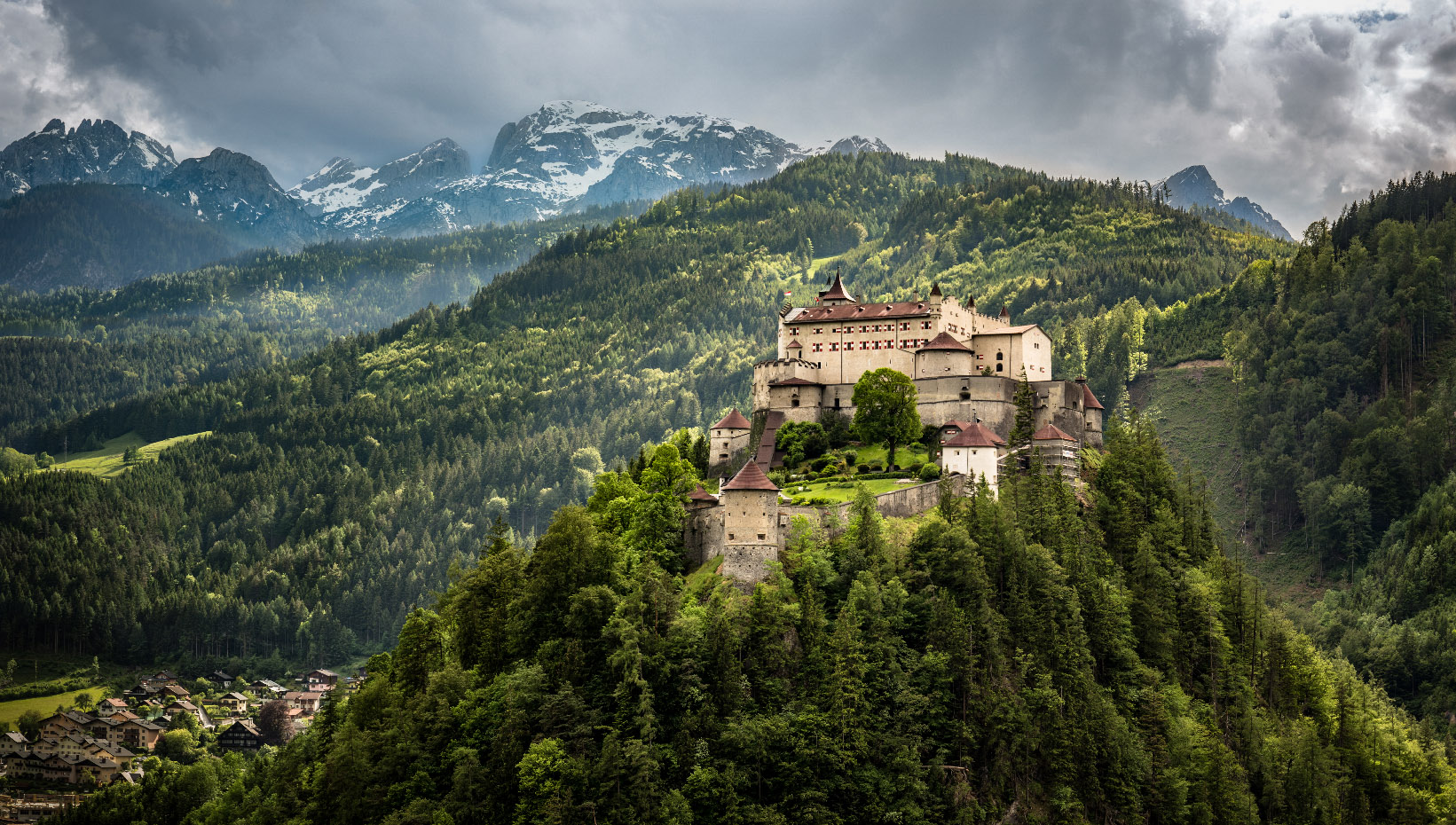 |
| Photo: Locationscout |
Surrounding the 900-year-old Hohenwerfen Castle is an amazing landscape. Rising majestically above the Salzach River Valley, this former defensive stronghold provides thrilling experiences for tourists seeking adventure and culture.
Hohenwerfen Castle delivers on its promise of an unforgettable journey! The historic State Falconer's, with its daily falconry shows, is an absolute magnet for visitors, aside from guided tours of the castle and its exhibition of ancient weapons, a chic castle tavern, and the Knights' Store. Up at the castle is the first Austrian Museum of Falconry, complete with a bird-of-prey theme path.
Hohenwerfen Castle's extensive events calendar is always being updated and improved. This castle is a year-round attraction thanks to a variety of special programs that include falconry shows, hikes inspired by fairy tales, theatrical productions, folklore afternoons, medieval events, and "Mystical Nights".
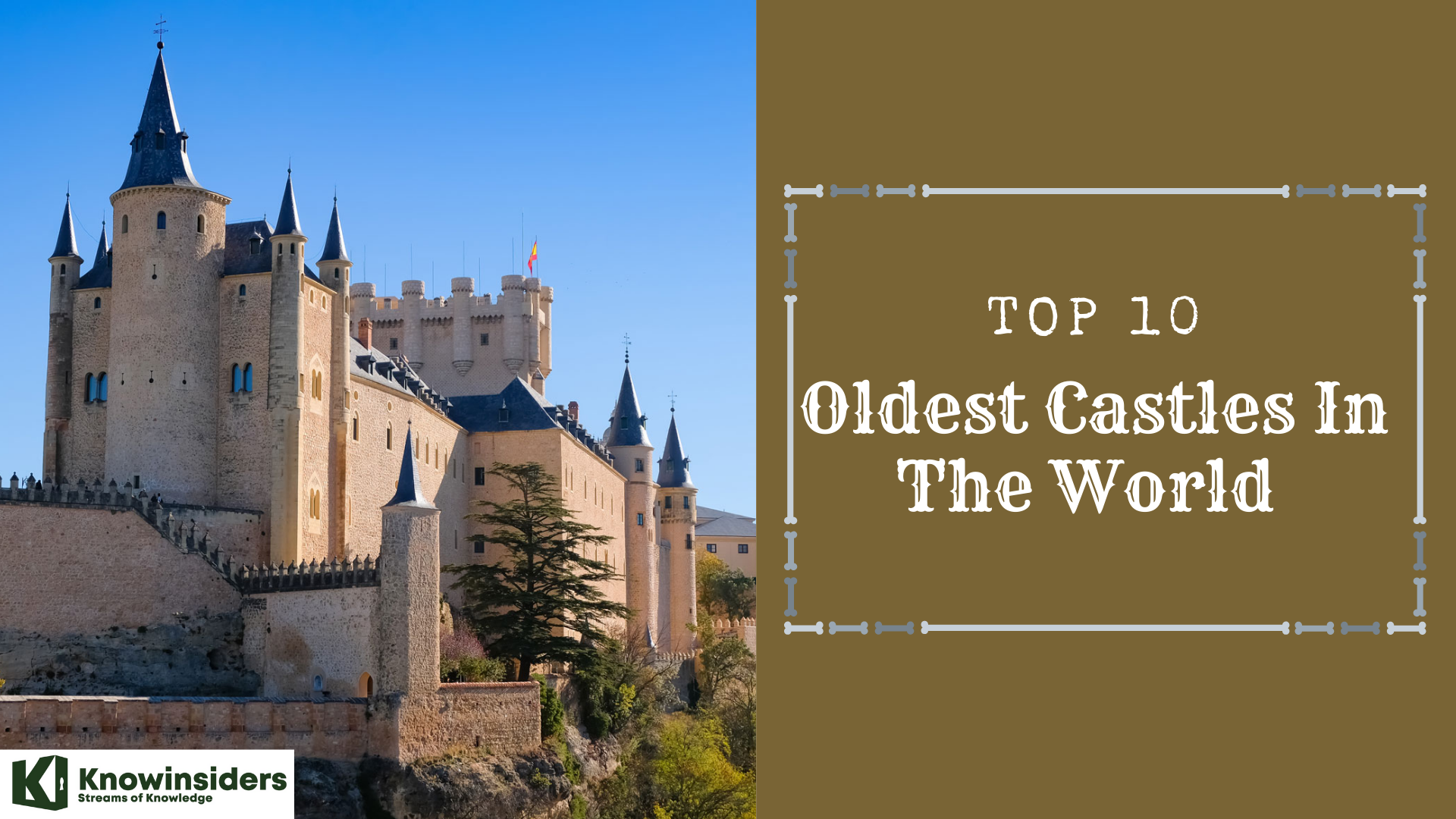 Top 10 Oldest Castles In The World Top 10 Oldest Castles In The World To know more about top 10 oldest castles in the world that you should visit once in your life, keep reading the article below. |
6. Neuschwanstein Castle, Germany
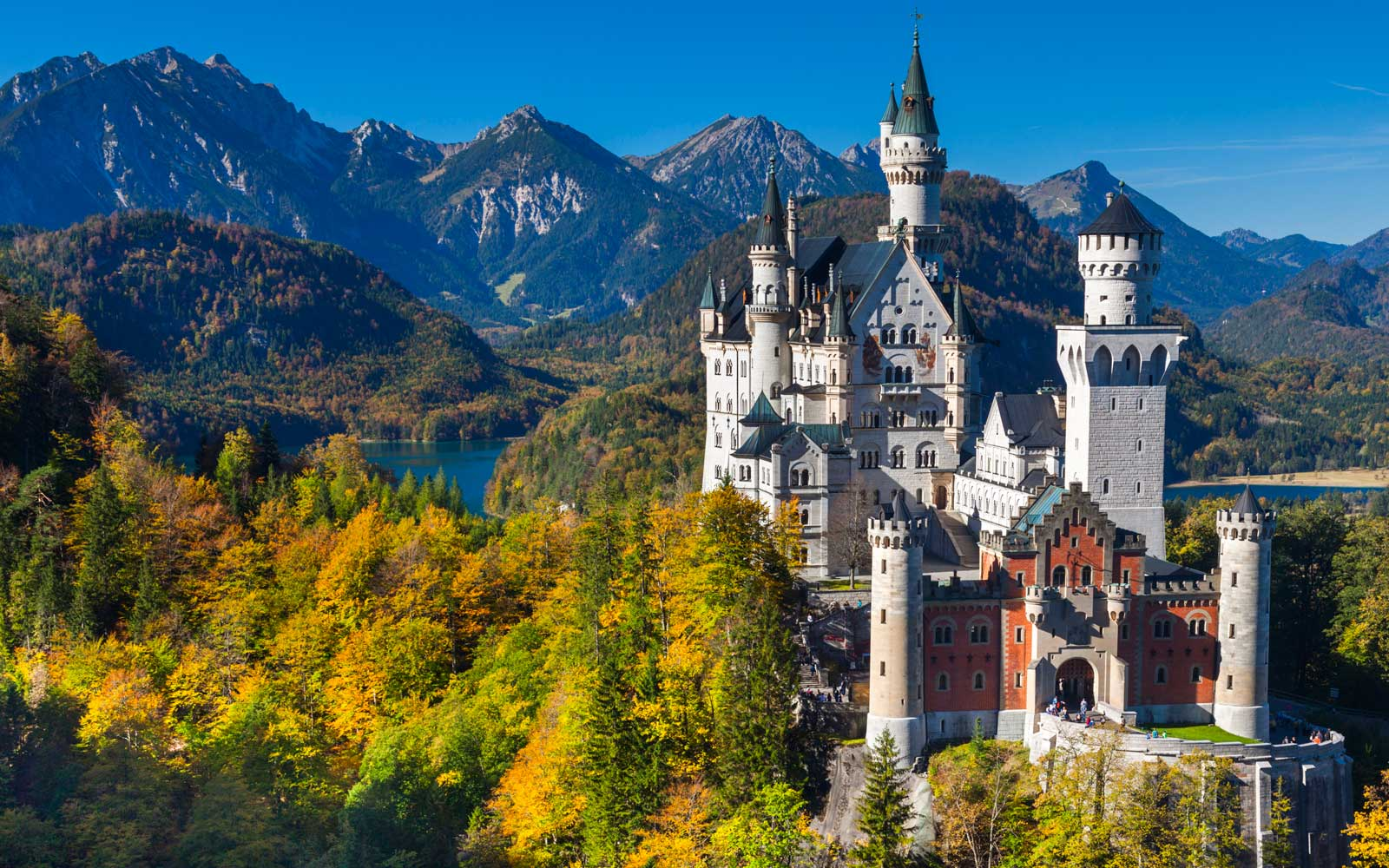 |
| Photo: Getty Images |
As construction on Neuschwanstein Castle commenced in 1869, Ludwig II combined design elements from Wartburg Castle with the imaginary Castle of the Holy Grail from Wagner's opera 'Parsifal'. He made the decision to focus more of his time on the great arts as a king with no actual authority. As evidenced by the Singers' Hall, which is a larger and more spectacular version of the Wartburg Castle's banqueting hall and singers' hall, he created his own fantasy world of myths and fairytales. The sole distinction is that there was never any banqueting or singing here.
The Throne Room, which soars to a height of 15 meters, glistens with opulent gold and blue décor. Ludwig II, on the other hand, devoted most of his attention to the Hall of the Holy Grail, combining the most advanced technological advancements at the time with his nostalgia for the Middle Ages. During mealtimes, the King also went back to the Middle Ages, decorating the dining hall walls with pictures from the Wartburg Singers' Contest. Designed to resemble a stalactite cave, the grotto is another highlight featuring colorful lighting and tiny waterfalls.
5. The Hohenzollern Castle
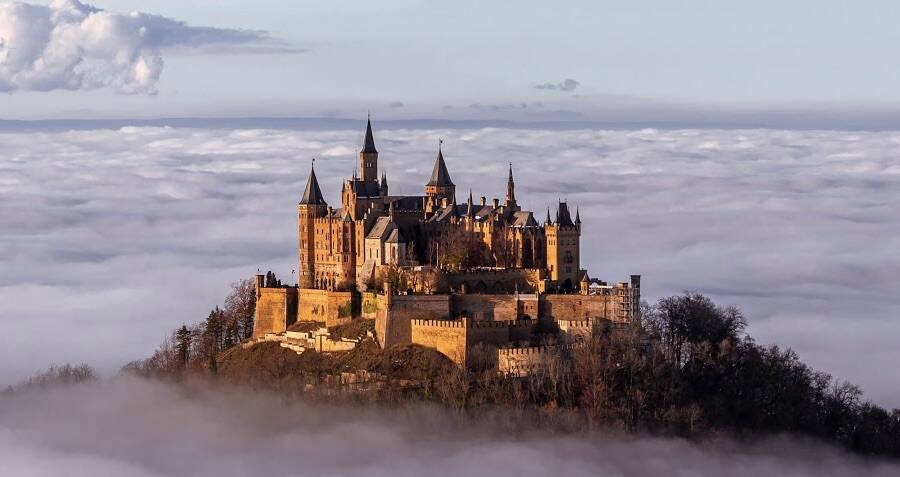 |
| Photo: All That's Interesting |
King Frederick William IV of Prussia was somewhat of a Romanticist on the throne, with a poetically sentimental attachment to the Middle Ages and a passion for the fine arts. And that's most likely the reason he hired Berlin's top architect at the time, Friedrich August Stüler, to rebuild the castle remnants of his ancestors. Though it was a little behind the times, he brought to life the universally idealized picture of a medieval knight's castle, which is still breathtaking and immensely beautiful today.
The reconstruction project was eventually finished in 1867, with the cornerstone being placed in 1852. There are 140 rooms in the castle, the most notable of which are the King's bed chamber, the Blue Salon, the Queen's room, and the library with its amazing murals. With its magnificent marquetry flooring, gilded coffered ceiling, and portraits of Prussian royals, the interior design is exquisite. The castle has its own brewery, PREUSSENS, for those who don't care so much about monarchy ideals.
4. Bled Castle, Slovenia
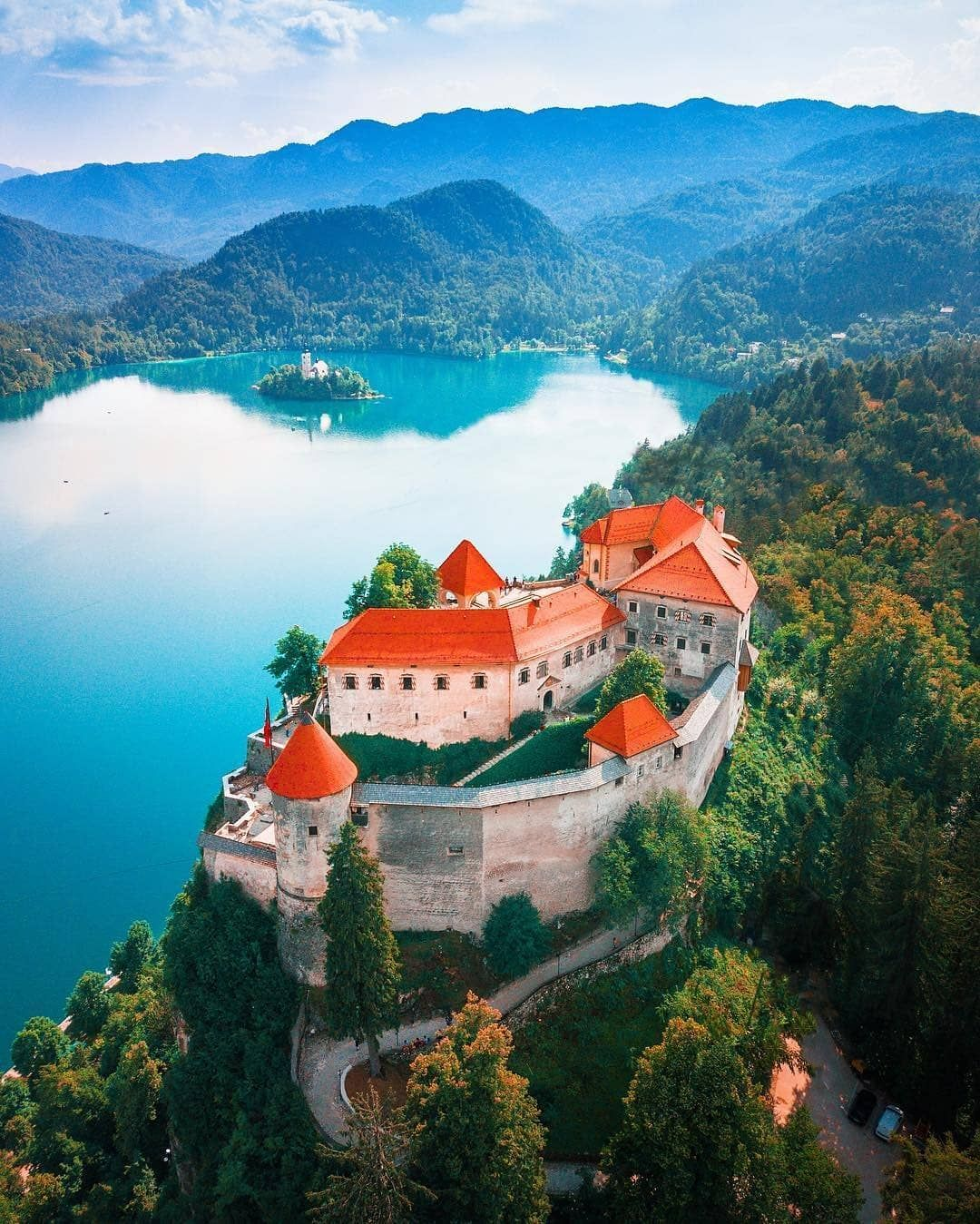 |
| Photo: Pinterest |
The alpine town of Bled is among the most well-known and visited places in Slovenia. Bled is one of the most stunning Alpine resorts available, offering something for all types of visitors—young or old, active or leisurely—and is as picturesque as a place can get. Sometimes referred to as the "genuine Slovenian fairytale," this place is most known for its lake located in the center of an island and its delicate Blejska kremšnita, or bled cream cake.
Imagined by children, Bled Castle is perched dramatically high on a cliff overlooking the town and lake. It was first recorded in the year 1011, making it the oldest castle in Slovenia officially. In 2011, it commemorated its 1.000th birthday. Constructed and expanded without planning throughout the ages, the castle is now a picturesque blend of architectural styles. Among the many attractions on the castle grounds are a small but educational museum detailing the history of the area from the first human settlements to the present, a chapel from the 16th century, a wine cellar, a herbal gallery, a replica of Gutenberg's printing press (which is still in use producing souvenirs for guests), and of course a restaurant with stunning views of the mountains and lake below.
3. The Castle in Love with the Wind
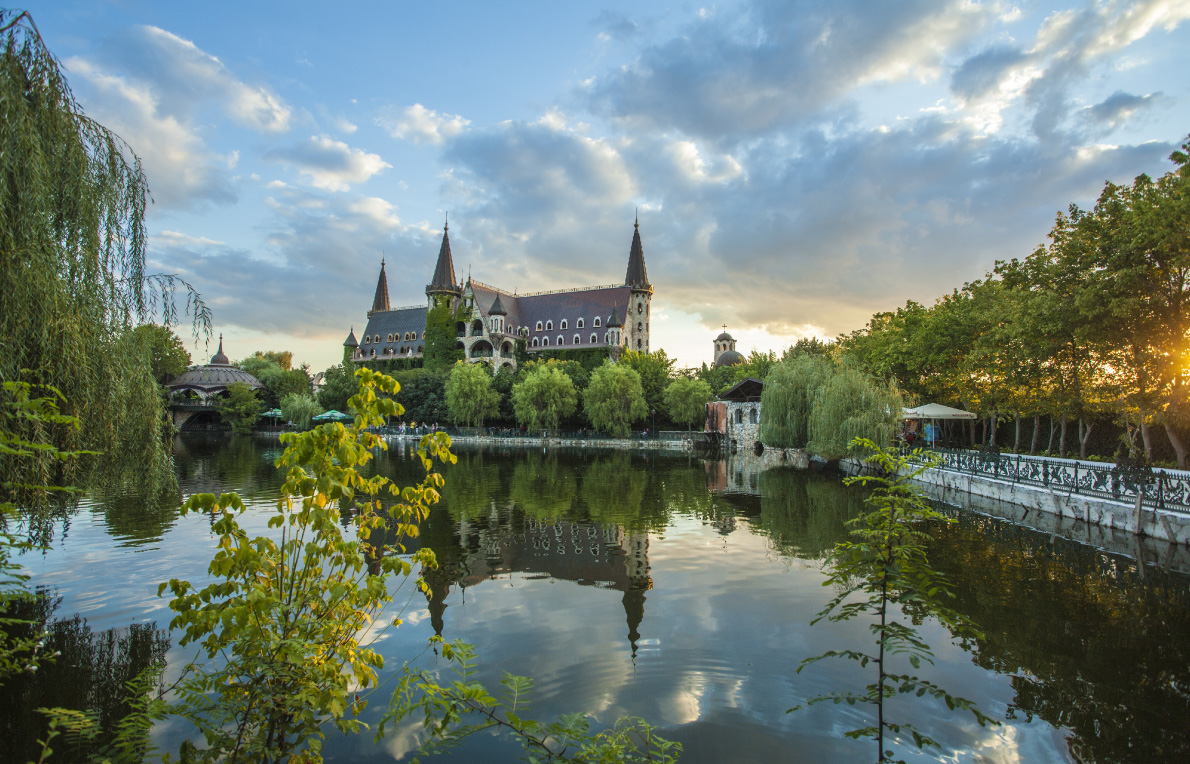 |
| Photo: European Best Destinations |
Georgi Tumpalov was a gifted architect and dreamer, and his castle, In Love with the Wind, features amazing structures made of marble and metamorphosed limestone that are taken from fairy tales. Europe's only recently constructed castle.
A fable set by the sea is called The Castle In Love with the Wind. The location of the Castle is a special example of a natural phenomenon. Here, the wind is attracted to the sun, and it blows whenever the sun is shining. Georgi Tumpalov, an architect and developer, decided to build a castle that only existed in fairy tales on this barren field close to the village, fulfilling a child's dream. However, a dream never materializes on its own. Huge international crowds of tourists flocked to the small village of Ravadinovo, which is located 6 km from Sozopol, because of Tumpalov. The Bulgarian Hotel and Restaurant Association named the castle the most beautiful tourist destination of the year. In order to create the Sleeping Beauty film in 2013, Walt Disney utilized the natural surroundings. The castle took home first place in the "A' Design Awards 2016" international competition, which was held in the "A Hospitality, Recreation, Travel and Tourism Design" category.
2. The Alcazar Castle
 |
| Photo: Great Castles of Europe |
Known as the "Segovia Fortress" or Alcázar of Segovia, it is a medieval fortress situated in Segovia, Castile and León, Spain. UNESCO has designated the castle as a World Heritage Site. One of Spain's most recognizable castle-palaces, rising out on a rocky crag above the meeting point of two rivers close to the Guadarrama mountains, is shaped like a ship's bow. Originally intended to be a fortress, the alcázar has since been used as a military academy, a royal palace, a state prison, and a Royal Artillery College. Currently, it serves as both a military archives facility and a museum.
The Berber Almoravid dynasty constructed the Alcázar of Segovia, a fort dating back to the Muslim era that was eventually largely replaced by the current building. In 1120, approximately thirty-two years after Christian Spaniards had taken control of Segovia, this castle was first mentioned (during the time when King Alfonso VI reconquered lands to the south of the Duero river down to Toledo and beyond).
Prior to King Alfonso VIII's reign (1155–1214), the Alcázar's shape and form were unknown; however, early records mentioned a wooden stockade fence. We can therefore conclude that the Muslim era structure was nothing more than a wooden fort constructed over the ancient Roman foundations prior to Alfonso VIII's reign. This alcázar served as the primary residence of Alfonso VIII and his wife Eleanor of England, and extensive work was done to erect the foundations of the stone fortification that still stands today.
1. The Palace of Pena
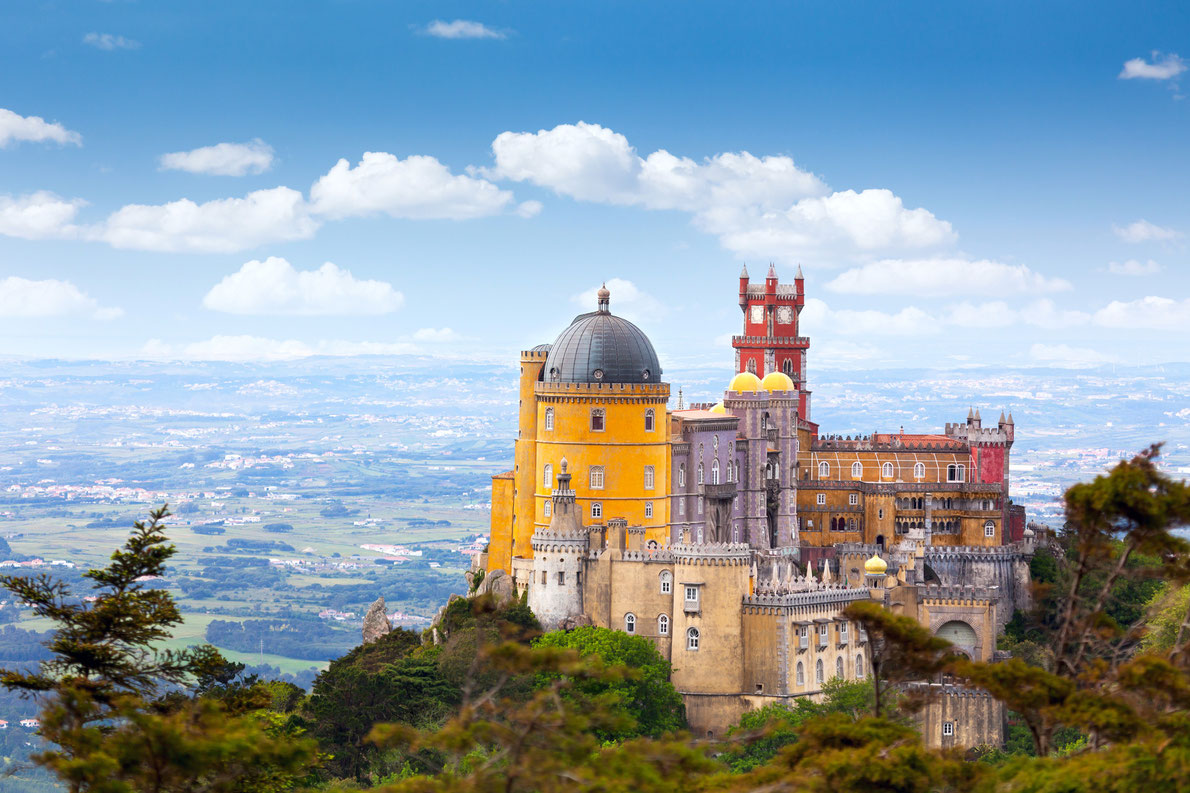 |
| Photo: European Best Destinations |
On the Portuguese Riviera, in the municipality of Sintra, the Pena Palace (Palácio da Pena) is a romanticist castle located in São Pedro de Penaferrim. Perched atop a hill in the Sintra Mountains, overlooking the town of Sintra, the castle is easily visible from Lisbon and a large portion of its metropolitan area on a clear day. It is a national monument and one of the most significant examples of Romanticism from the 19th century worldwide. The palace is one of Portugal's Seven Wonders and a UNESCO World Heritage Site. The President of the Portuguese Republic and other government officials also use it for formal events.
The history of the castle began in the Middle Ages with the construction of a chapel devoted to Our Lady of Pena atop the hill above Sintra. Tradition has it that building started following a vision of the Virgin Mary.
In order to fulfill a vow, King John II traveled to the location in 1493 with his wife, Queen Leonor. King Manuel I, who succeeded him, had a great affection for this sanctuary as well. He gave the Order of Saint Jerome the order to build a monastery there. For centuries Pena was a modest, sedate retreat for monks, with room for no more than eighteen.
Lightning struck the monastery in the 18th century, causing significant damage. But it was the Great Lisbon Earthquake of 1755, which happened not long after, that severely damaged the monastery and left it in ruins. However, the chapel managed to survive with minimal damage, along with its Nicolau Chanterene-attributed marble and alabaster pieces.
Even though the ruins were abandoned for many years, young Prince Ferdinand was still in awe of them. As King Consort Ferdinand II, he made the decision in 1838 to purchase the old monastery, the surrounding lands, the Castle of the Moors, and a few other local estates. The Portuguese royal family would use the remnants of the monastery as a summer residence, so King Ferdinand set out to build a palace on their site. Wilhelm Ludwig von Eschwege, a mining engineer and lieutenant general, was tasked with overseeing the reconstruction of the Romantic style. Being a well-traveled amateur architect from Germany, Eschwege probably knew a number of castles along the Rhine. Although it was nearly finished in 1847, the construction was completed between 1842 and 1854 due to significant intervention on matters of decoration and symbolism by King Ferdinand and Queen Maria II. The King recommended vault arches, the addition of Islamic and Medieval elements, and the design of an elaborate window for the main façade that was modeled after the chapter house window of the Convent of the Order, among other ideas.
 Top 10 Oldest Castles In The World Top 10 Oldest Castles In The World To know more about top 10 oldest castles in the world that you should visit once in your life, keep reading the article below. |
 Top 10 Most Expensive Cities In The UK Top 10 Most Expensive Cities In The UK If you are looking for the most expensive places to live in the UK, here it is. Some cities in the UK offer more job ... |
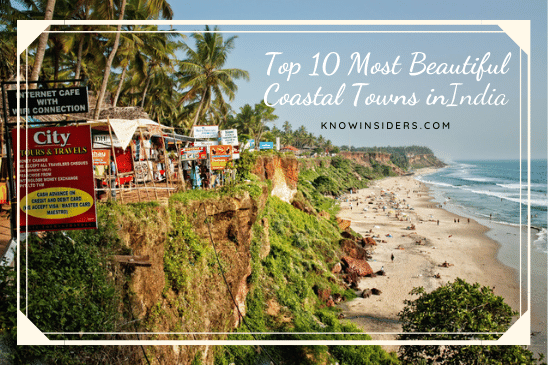 Top 10 Most Beautiful Coastal Towns in India Top 10 Most Beautiful Coastal Towns in India If some seaside tranquility is what you’re looking for, then India has a lot to offer. Check out right below the 10 most beautiful coastal ... |
 Top 10 Cheapest and Most Expensive Cities For Student Night Out In Britain Top 10 Cheapest and Most Expensive Cities For Student Night Out In Britain How much are you ready to pay for a student night out? What are the most expensive and cheapest cities for a student night out ... |


























